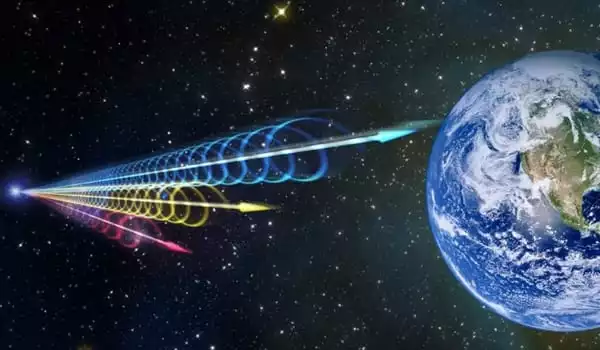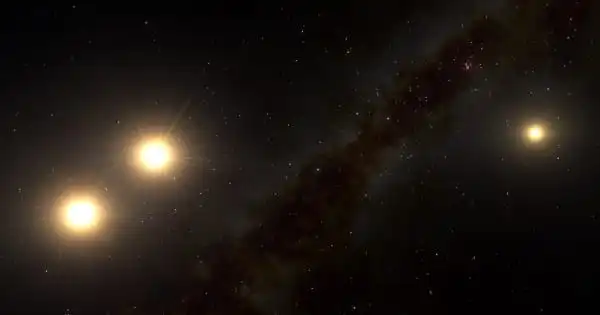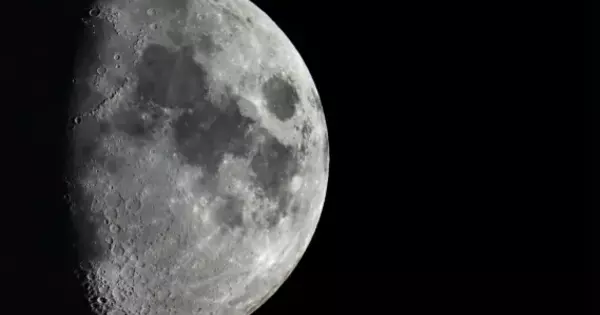Astronomers have discovered a startling source of cryptic, fast radio emission in a galaxy not so far away. FRBs (fast radio bursts) were identified for the first time in 2007. They emit as much energy as the Sun does in days in around one-thousandth of a second. Every day, hundreds of FRBs go off throughout the observable cosmos, yet they are difficult to detect. We have no idea where or when the next one will happen, and most radio telescopes have a very narrow field of vision, as if we were looking at the universe through a drinking straw.
The signal, a recurring fast radio burst, or FRB, was detected over a period of several months in 2021, allowing researchers to pinpoint its position to a globular cluster — a tight, spherical grouping of stars — in M81, a giant spiral galaxy 12 million light-years away. The findings, published in Nature on February 23, challenge astronomers’ ideas about what objects generate FRBs.
“This is a very groundbreaking discovery,” says Bing Zhang, an astronomer at the University of Nevada, Las Vegas who was not involved in the research. “Seeing a FRB from a globular cluster is intriguing.” That is not the popular location that many expected.”
Since their discovery in 2007, astronomers have been perplexed by these unexplained cosmic radio emissions, which normally endure less than a millisecond. However, a FRB was observed in our own galaxy in 2020, assisting scientists in determining that one cause must be magnetars – young, highly magnetized neutron stars with magnetic fields a trillion times stronger than Earth’s.
Seeing a FRB from a globular cluster is intriguing. This is a very exciting discovery because it was absolutely unexpected. The latest discoveries are surprising because globular clusters only contain old stars, some of which are among the oldest in the cosmos.
Franz Kirsten
The latest discoveries are surprising because globular clusters only contain old stars, some of which are among the oldest in the cosmos. Magnetars, on the other hand, are young remnant dense cores formed by the death of short-lived massive stars. After around 10,000 years, the magnetized cores are predicted to lose the energy required to emit FRBs. Globular clusters, whose stars average many billions of years old, are much too elderly to have had a sufficiently recent young stellar death to create this type of magnetar.
Franz Kirsten and colleagues used a network of 11 radio telescopes distributed across Europe and Asia to capture five bursts from the same source in order to localize the FRB. The researchers were able to pinpoint the signal’s sources by combining radio data, concluding that it was almost probably from within a globular cluster.
“This is a very exciting discovery because it was absolutely unexpected,” says Kirsten of the Netherlands Institute for Radio Astronomy, who is stationed at Sweden’s Onsala Space Observatory.

The new FRB might still be caused by a magnetar, the team proposes, but one that formed in a different way, such as from old stars common in globular clusters. For example, this magnetar could have been created from a remnant stellar core known as a white dwarf that had gathered too much material from a companion star, causing it to collapse.
“This is a [magnetar] formation channel that has been predicted, but it’s hard to see,” Kirsten says. “Nobody has actually seen such an event.”
Alternatively, the magnetar might have originated through the merger of two stars in close orbit around one another, such as a pair of white dwarfs, a pair of neutron stars, or one of each, but this scenario is less feasible, according to Kirsten. It’s also possible that the FRB source is an extremely powerful millisecond pulsar, which is a form of neutron star that may be found in a globular cluster but has a smaller magnetic field.
Only a few FRB sources have been precisely located to date, and they are all in or near star-forming regions of galaxies. Aside from providing a new source for FRBs, the findings show that magnetars formed by processes other than the demise of young stars may be more prevalent than previously thought.
According to the researchers, the most likely hypothesis is that the magnetar is generated in another way. Because globular clusters have a high stellar density, numerous close binary stars are likely to exist within them. If a white dwarf sucked mass from a stellar companion, it may have gathered enough mass to collapse into a neutron star.
Another possibility is the union of two white dwarfs, a white dwarf, and a neutron star, or even two low-mass neutron stars. A collision of this type could also result in further collapse and the formation of a highly magnetic neutron star.
















